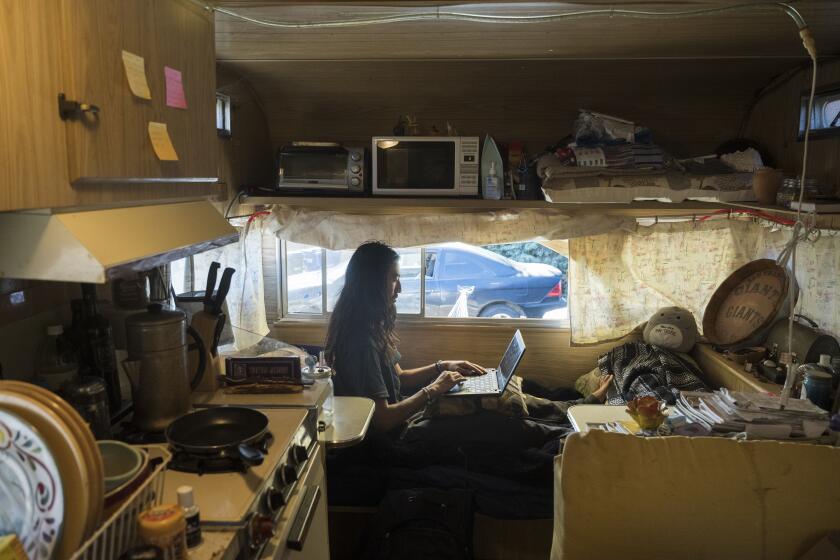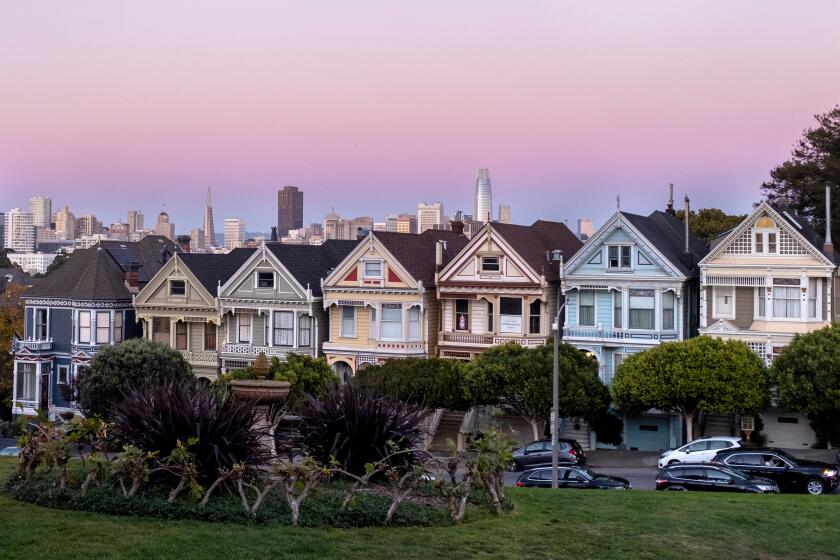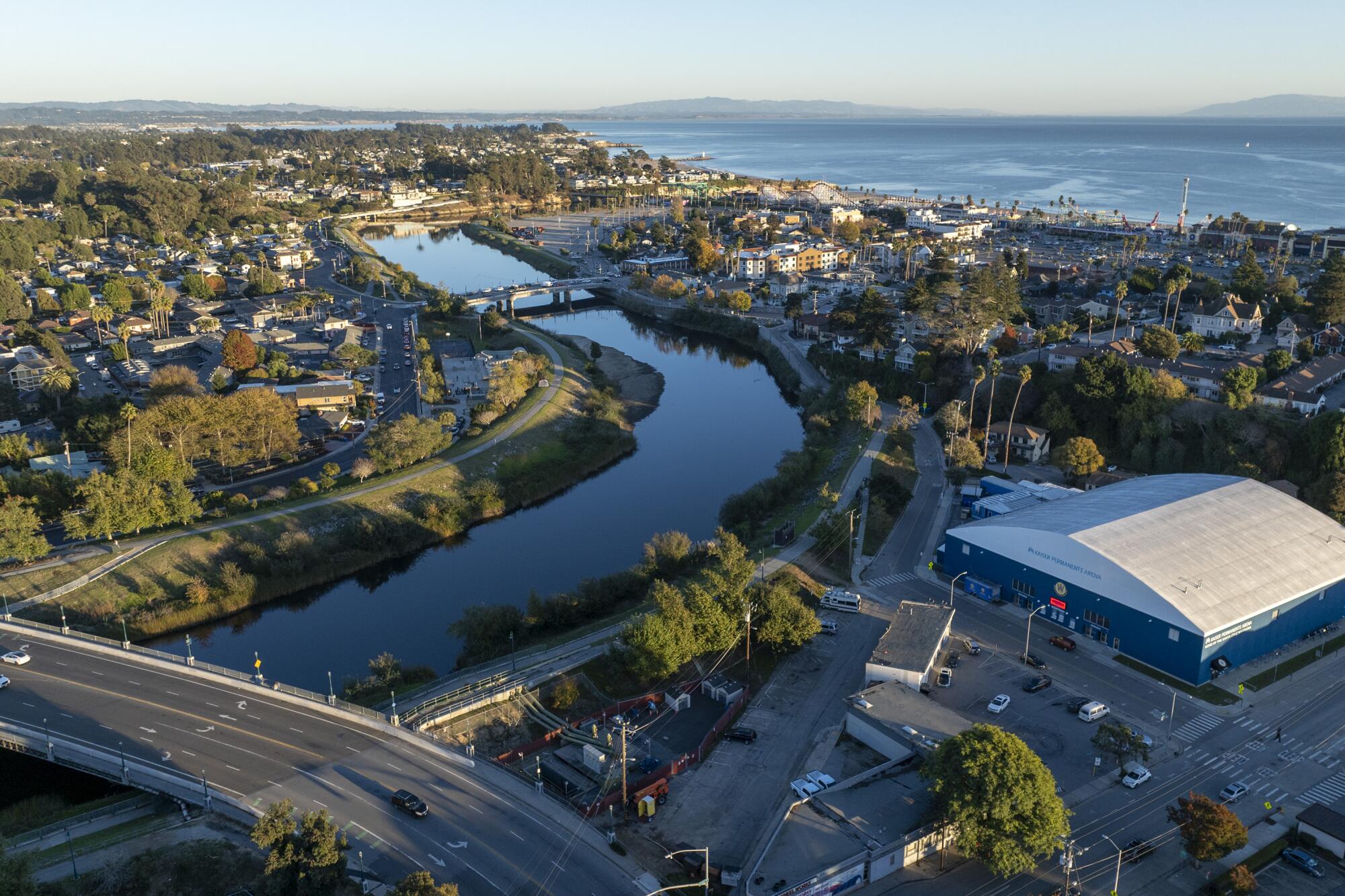
SANTA CRUZ — You can sense it in the ubiquitous “Help Wanted” posters in artsy shops and restaurants, in the ranks of university students living out of their cars and in the outsize percentage of locals camping on the streets.
This seaside county known for its windswept beauty and easy living is in the midst of one of the most serious housing crises anywhere in home-starved California. Santa Cruz County, home to a beloved surf break and a bohemian University of California campus, also claims the state’s highest rate of homelessness and, by one measure based on local incomes, its least affordable housing.
Leaders in the city of Santa Cruz have responded to this hardship in a land of plenty — and to new state laws demanding construction of more affordable housing — with a plan to build up rather than out.

A downtown long centered on quaint sycamore-lined Pacific Avenue has boomed with new construction in recent years. Shining glass and metal apartment complexes sprout in multiple locations, across a streetscape once dominated by 20th century classics like the Art Deco-inspired Palomar Inn apartments.
And the City Council and planning department envision building even bigger and higher, with high-rise apartments of up to 12 stories in the southern section of downtown that comes closest to the city’s boardwalk and the landmark wooden roller coaster known as the Giant Dipper.
“It’s on everybody’s lips now, this talk about our housing challenge,” said Don Lane, a former mayor and an activist for homeless people. “The old resistance to development is breaking down, at least among a lot of people.”
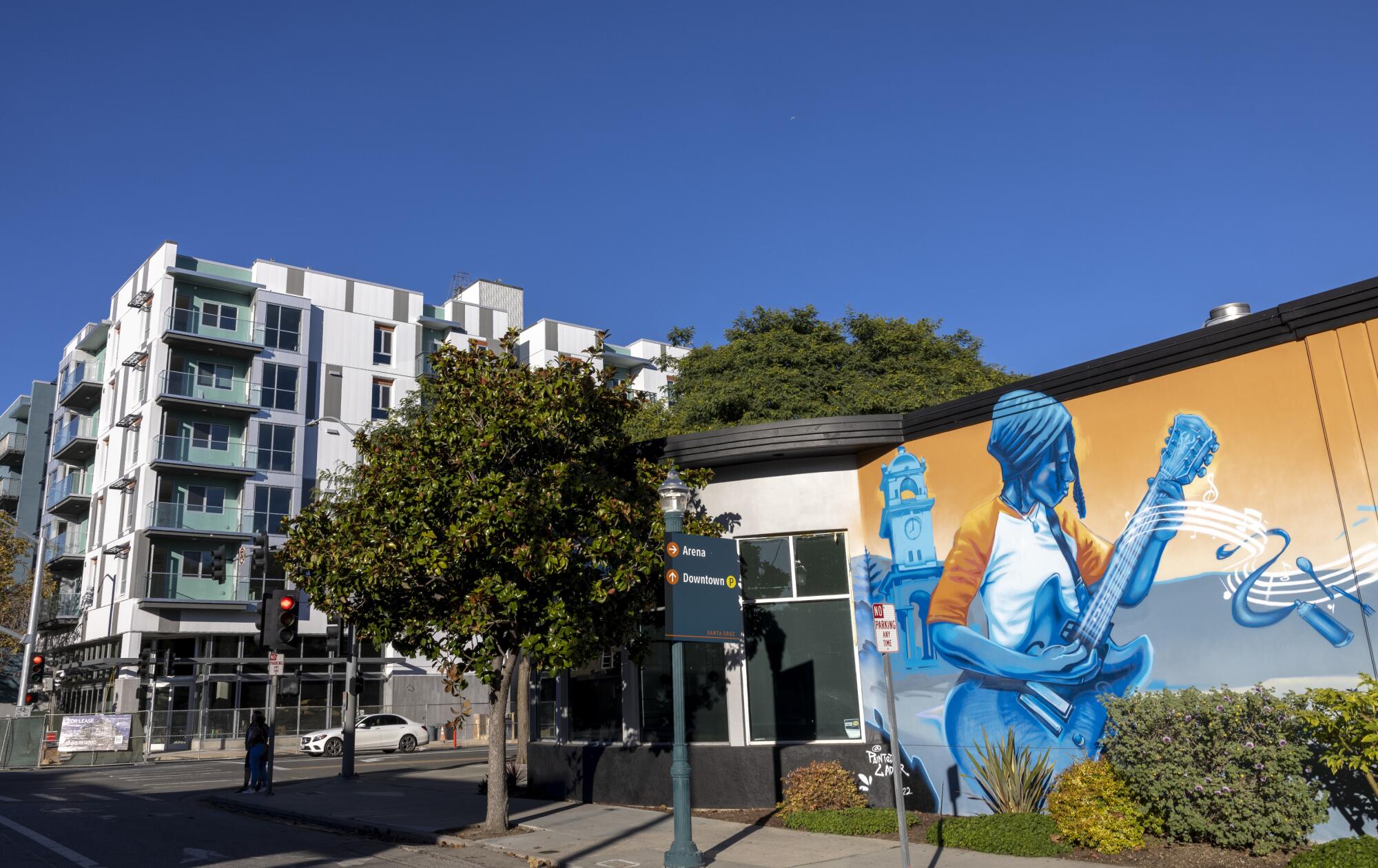
Said current Mayor Fred Keeley, a former state assemblyman: “It’s not a question of ‘no growth’ anymore. It’s a question of where are you going to do this. You can spread it all over the city, or you can make the urban core more dense.”
But not everyone in famously tolerant Santa Cruz is going along. The high-rise push has spawned a backlash, exposing sharp divisions over growth and underscoring the complexities, even in a city known for its progressive politics, of trying to keep desirable communities affordable for the teachers, waiters, firefighters and store clerks who provide the bulk of services.
A group originally called Stop the Skyscrapers — now Housing for People — protests that a proposed city “housing element” needlessly clears the way for more apartments than state housing officials demand, while providing too few truly affordable units.
City officials say the plan they hope to finalize in the coming weeks, with its greater height limits, only creates a path for new construction. The intentions of individual property owners and the vicissitudes of the market will continue to make it challenging to build the 3,736 additional units the state has mandated for the city.
“We’ve talked to a lot of people, going door to door, and the feeling is it’s just too much, too fast,” said Frank Barron, a retired county planner and Housing for People co-founder. “The six- and seven-story buildings that they’re building now are already freaking people out. When they hear what [the city is] proposing now could go twice as high, they’re completely aghast.”
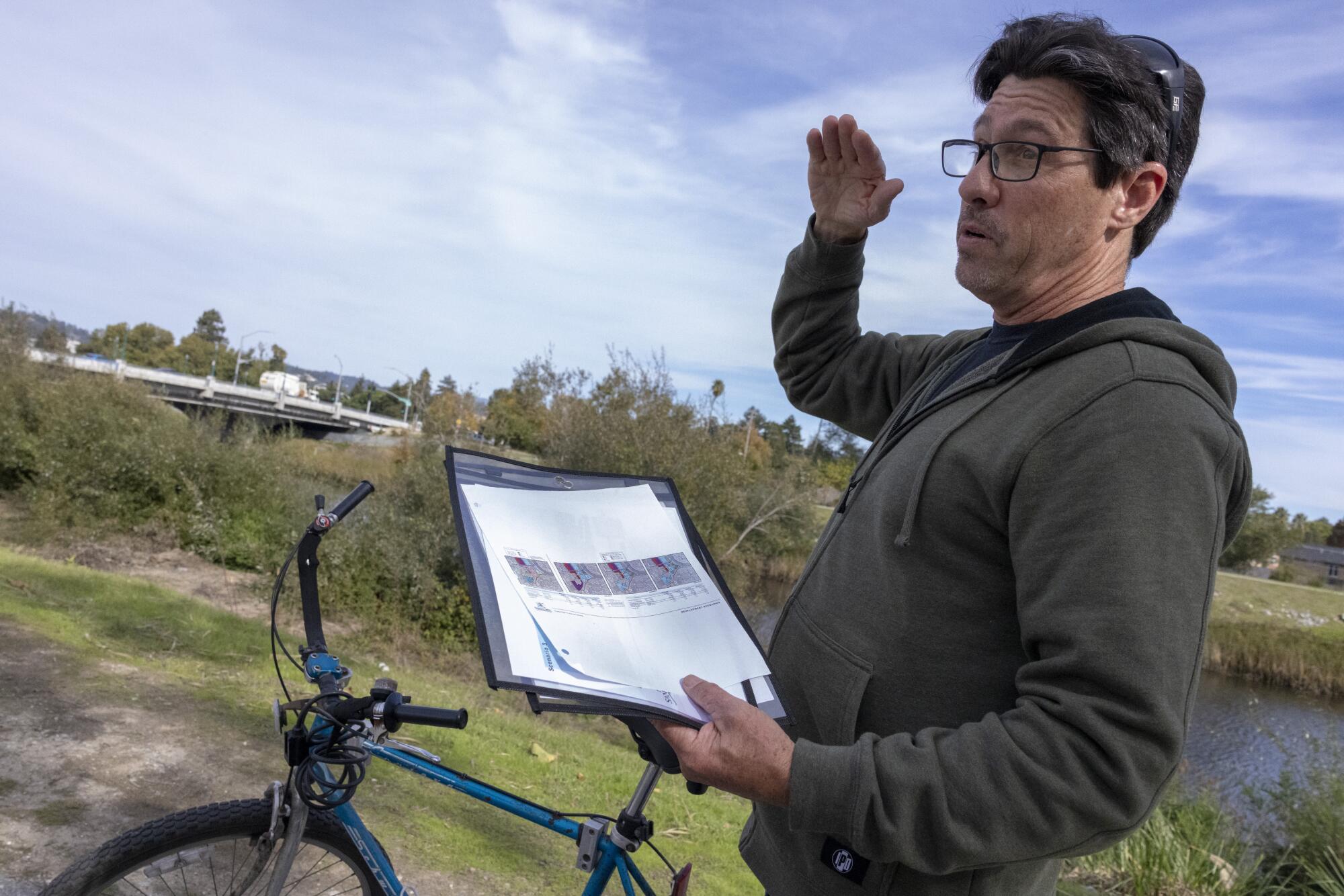
Susan Monheit, a former state water official and another Housing for People co-founder, calls 12-story buildings “completely out of the human scale,” adding: “It’s out of scale with Santa Cruz’s branding.”
Housing for People has gathered enough signatures to put a measure on the March 2024 ballot that, if approved, would require a vote of the people for development anywhere in the city that would exceed the zoning restrictions codified in the current general plan, which include a cap of roughly seven or eight stories downtown.
The activists say that they are trying to restore the voices of everyday Santa Cruzans and that city leaders are giving in to out-of-town builders and “developer overreach laws.”
The nascent campaign has generated spirited debate. Opponents contend the slow-growth measure would slam on the brakes, just as the city is overcoming decades of construction inertia. They say Santa Cruz should be a proud outlier in a long string of wealthy coastal cities that have defied the state’s push to add housing and bring down exorbitant home prices and rental costs.
Diana Alfaro, who works for a Santa Cruz development company, said many of the complaints about high-rise construction sound like veiled NIMBYism.
“We always hear, ‘I support affordable housing, but just not next to me. Not here. Not there. Not really anywhere,’ ” said Alfaro, an activist with the national political group YIMBY [Yes In My Back Yard] Action. “Is that really being inclusive?”
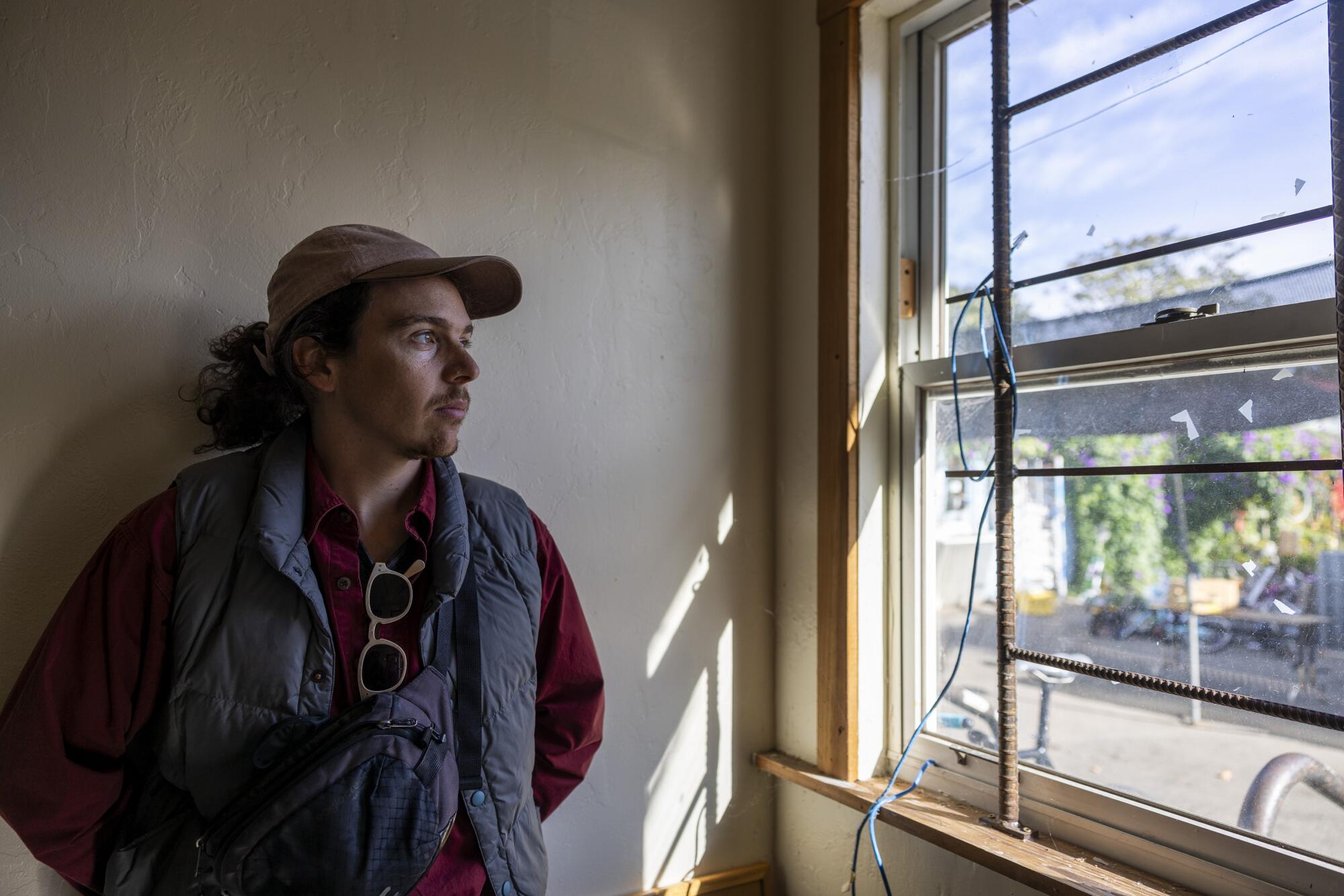
The dispute has divided Santa Cruz’s progressive political universe. What does it mean to be a “good liberal” on land-use issues in an era when UC Santa Cruz students commonly triple up in small rooms and Zillow reports a median rent of $3,425 that is higher than San Francisco’s?
Beginning in the 1970s, left-leaning students at the new UC campus helped power a slow-growth movement that limited construction across broad swaths of Santa Cruz County. Over the decades, the need for affordable housing was a recurring discussion. The county was a leader in requiring that builders who put up five units of housing or more set aside 15% of the units at below-market rates.
But Mayor Keeley said local officials gave only a “head nod” to the issue when it came to approving specific projects. “Well, here we are, 30 or 40 years later,” Keeley said, “and these communities are not affordable.”
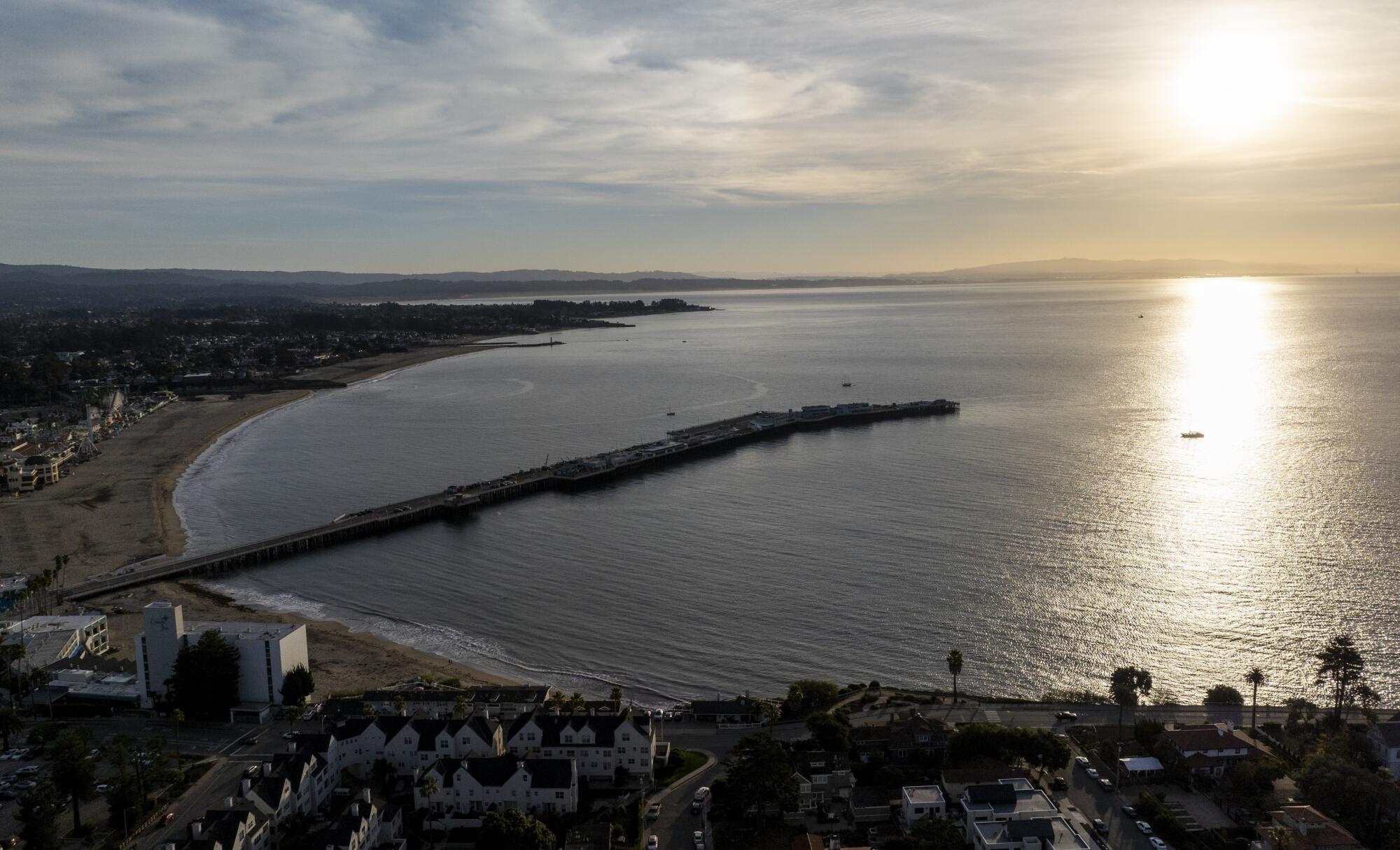
Today, with 265,000 residents, the county is substantially wealthy and white.
An annual survey this year found Santa Cruz County pushed past San Francisco to be the least affordable rental market in the country, given income levels in both places. And many observers say UC Santa Cruz students contend with the toughest housing market of any college town in the state.
Litigation blocking student housing projects, a potential delay in state funding and escalating construction costs are among the challenges.
State legislators have crafted dozens of laws in recent years to encourage construction of more homes, particularly apartments. While California has long required local governments to draft “housing elements” to demonstrate their commitment to affordable housing, state officials only recently passed other measures to actually push cities to put the plans into practice.
Regional government associations draw up a Regional Housing Needs Assessment, designating how many housing units — including affordable ones — should be built during an eight-year cycle. The state Department of Housing and Community Development can reject plans it deems inadequate.
For years 2024 to 2031, Santa Cruz was told it should build at least 3,736 units, on top of its existing 24,036.
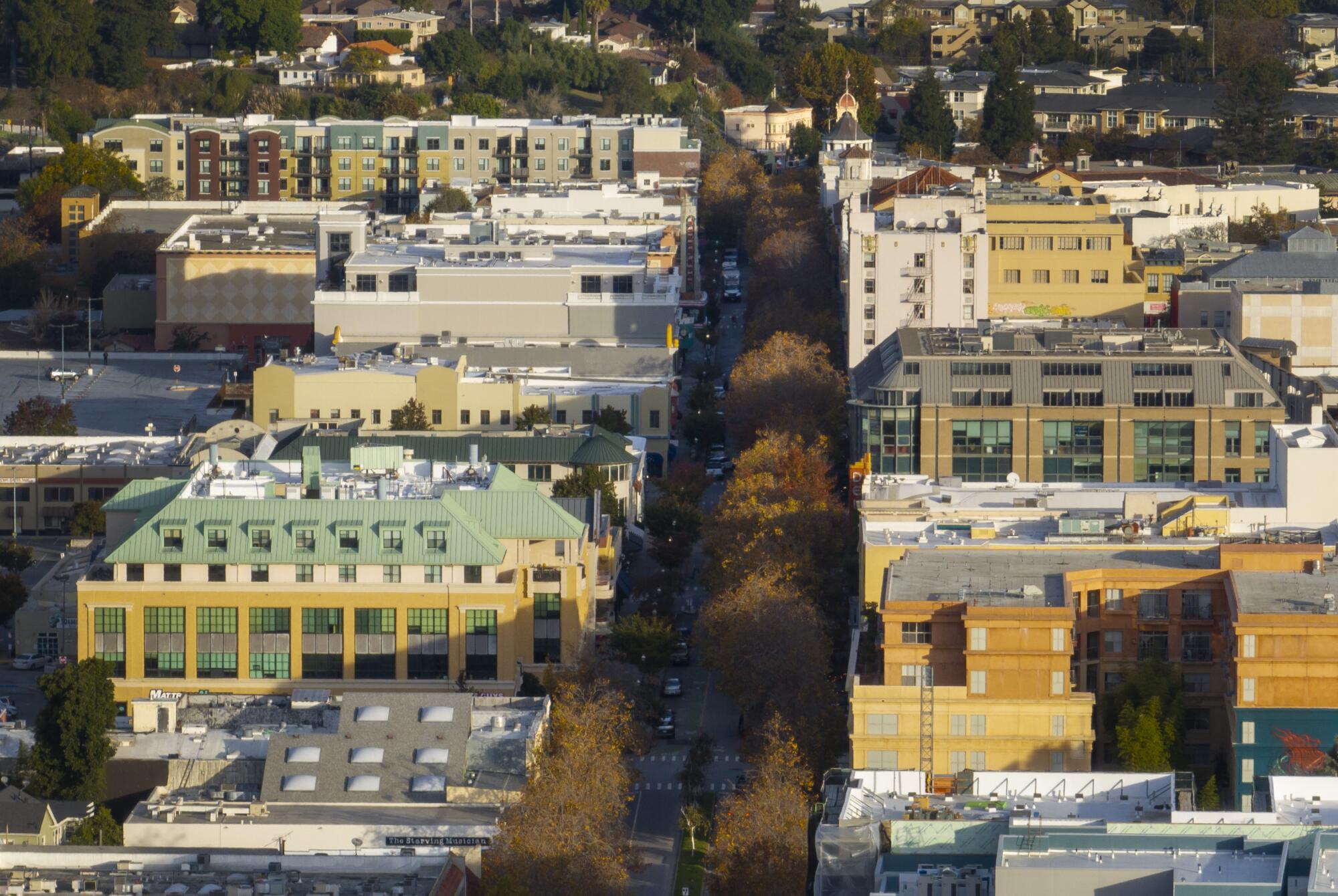
Santa Cruz and other cities have been motivated, at least in part, by a heavy “stick”: In cases when cities fail to produce adequate housing plans, the state’s so-called “builder’s remedy” essentially allows developers to propose building whatever they want, provided some of the housing is set aside for low- or middle-income families. In cities like Santa Monica and La Cañada-Flintridge, builders have invoked the builder’s remedy to push ahead with large housing projects, over the objections of city leaders.
The Santa Cruz City Council resolved to avoid losing control of planning decisions. A key part of their plan envisions putting up to 1,800 units in a sleepy downtown neighborhood of auto shops, stores and low-rise apartments south of Laurel Street. Initial concepts suggested one block could go as high as 175 feet (roughly 16 stories), but council members later proposed a 12-story height limit, substantially taller than the stately eight-story Palomar, which remains the city’s tallest building.
City planners say focusing growth in the downtown neighborhood makes sense, because bus lines converge there at a transit center and residents can walk to shops and services.
“The demand for housing is not going away,” said Lee Butler, the city’s director of planning and community development, “and this means we will have less development pressure in other areas of the city and county, where it is less sustainable to grow.”
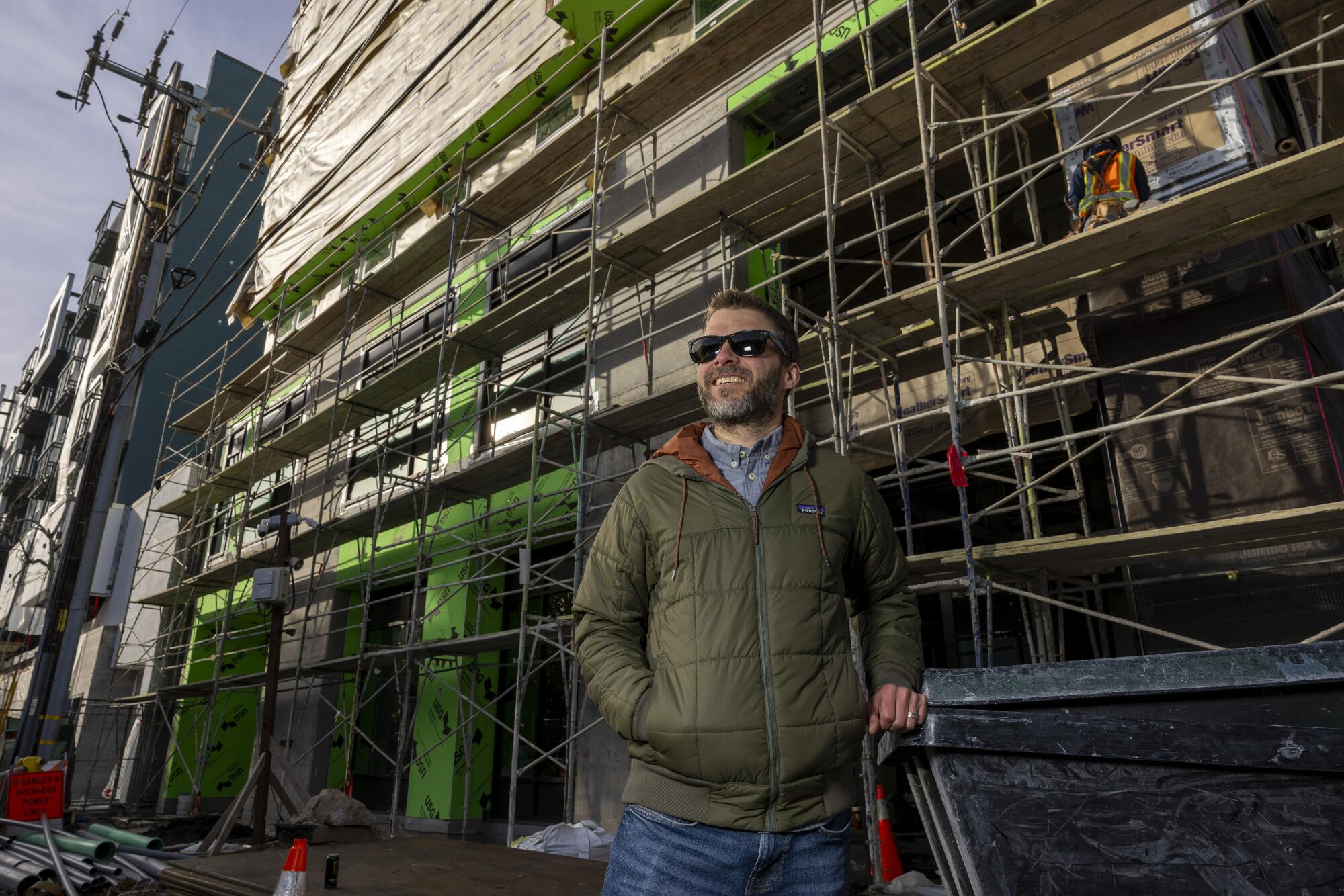
A public survey found support for a variety of other proposed improvements to make the downtown more attractive to walkers, bikers and tourists. Among other features, the plan would concentrate new restaurants and shops around the San Lorenzo River Walk; replace the fabric-topped 2,400-seat Kaiser Permanente Arena, which hosts the Santa Cruz Warriors (the G-league affiliate of the NBA’s Golden State Warriors), with a bigger entertainment and sports venue; and better connect downtown with the beach and boardwalk.
Business owners say they favor the housing plan for a couple of reasons: They hope new residents will bring new commerce, and they want some of the affordable apartments to go to their workers, who frequently commute well over an hour from places such as Gilroy and Salinas.
Restaurateur Zach Davis called the high cost of housing “the No. 1 factor” that led to the 2018 closure of Assembly, a popular farm-to-table restaurant he co-owned.
“How do we keep our community intact, if the people who make it all happen, the workers who make Santa Cruz what it is, can’t afford to live here anymore?” Davis asked.
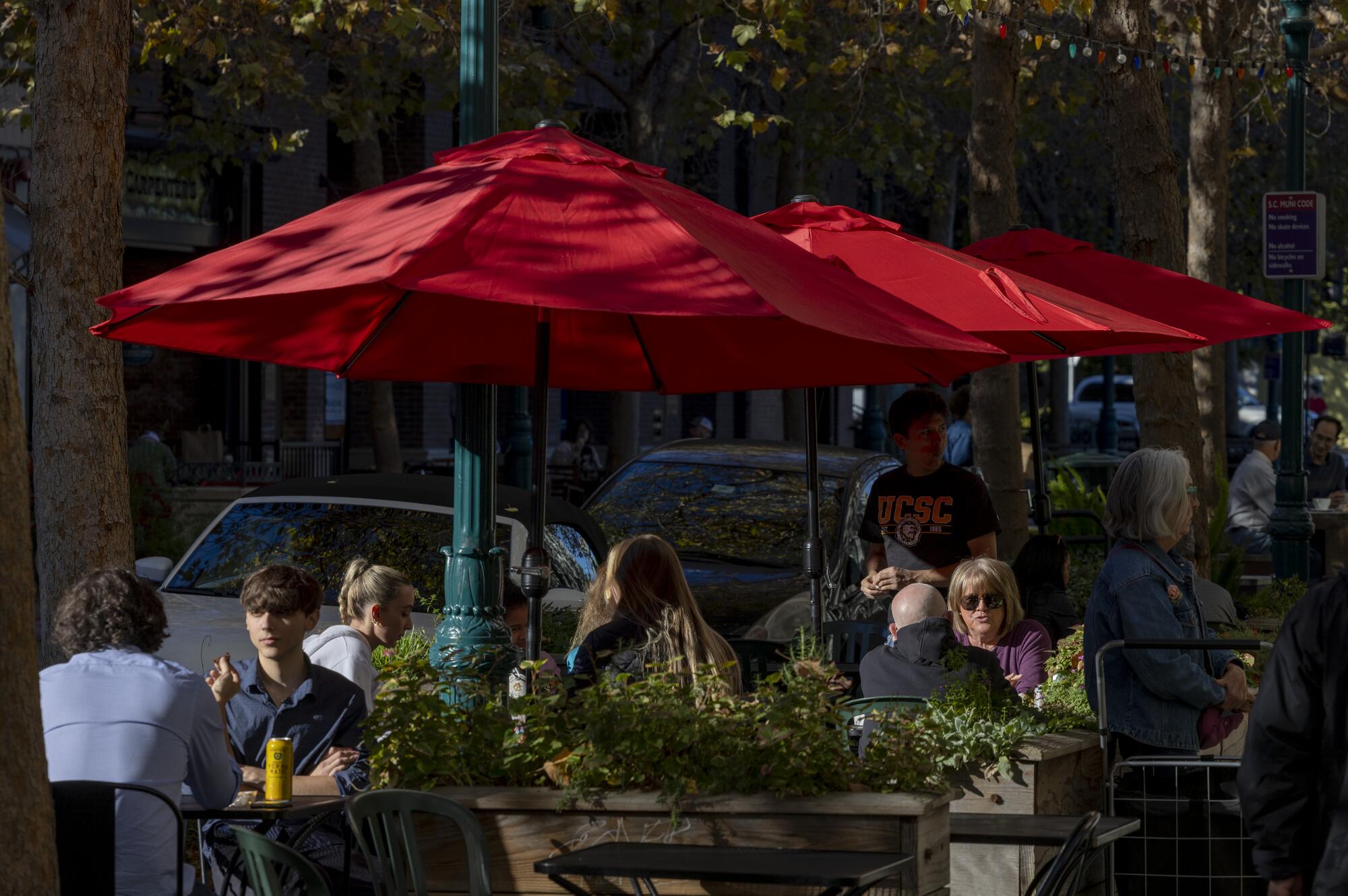
The city’s plan indicates that 859 of the units built over the next eight years will be for “very low income” families. But the term is relative, tied to a community’s median income, which in Santa Cruz is $132,800 for a family of four. Families bringing home between $58,000 and $82,000 would qualify as very low income. Tenants in that bracket would pay $1,800 a month for a three-bedroom apartment in one recently completed complex, built under the city’s requirement that 20% of units be rented for below-market rents.
The people pushing for high-rise development say expanding the housing supply will stem ever-rising rents. Opponents counter that the continued growth of UC Santa Cruz, which hopes to add 8,500 students by 2040, and a new surge of highly paid Silicon Valley “tech bros” looking to put down roots in beachy Santa Cruz would quickly gobble up whatever number of new units are built.
“They say that if you just build more housing, the prices will come down. Which is, of course, not true,” said Gary Patton, a former county supervisor and an original leader in the slow-growth movement. “So we’ll have lots more housing, with lots more traffic, less parking, more neighborhood impacts and more rich people moving into Santa Cruz.”
Leaders on Santa Cruz’s political left say new construction only touches one aspect of the housing crisis. Some of the leaders of Tenant Sanctuary, a renters’ rights group, would like to see Santa Cruz tamp down rents by creating complexes owned by the state or cooperatives and enacting a rent control law capping annual increases.
“No matter what they build, we need housing where the price is not tied to market swings and how much money can be squeezed out of a given area of land,” said Zav Hershfield, a board member for the group.
The up-zoning of downtown parcels has won the support of much of the city’s establishment, including the county Chamber of Commerce, whose chief executive said exorbitant housing prices are excluding blue-collar workers and even some well-paid professionals. “The question is, do you want a lively, vital, economically thriving community?” said Casey Beyer, CEO of the business group. “Or do you want to be a sleepy retirement community?”
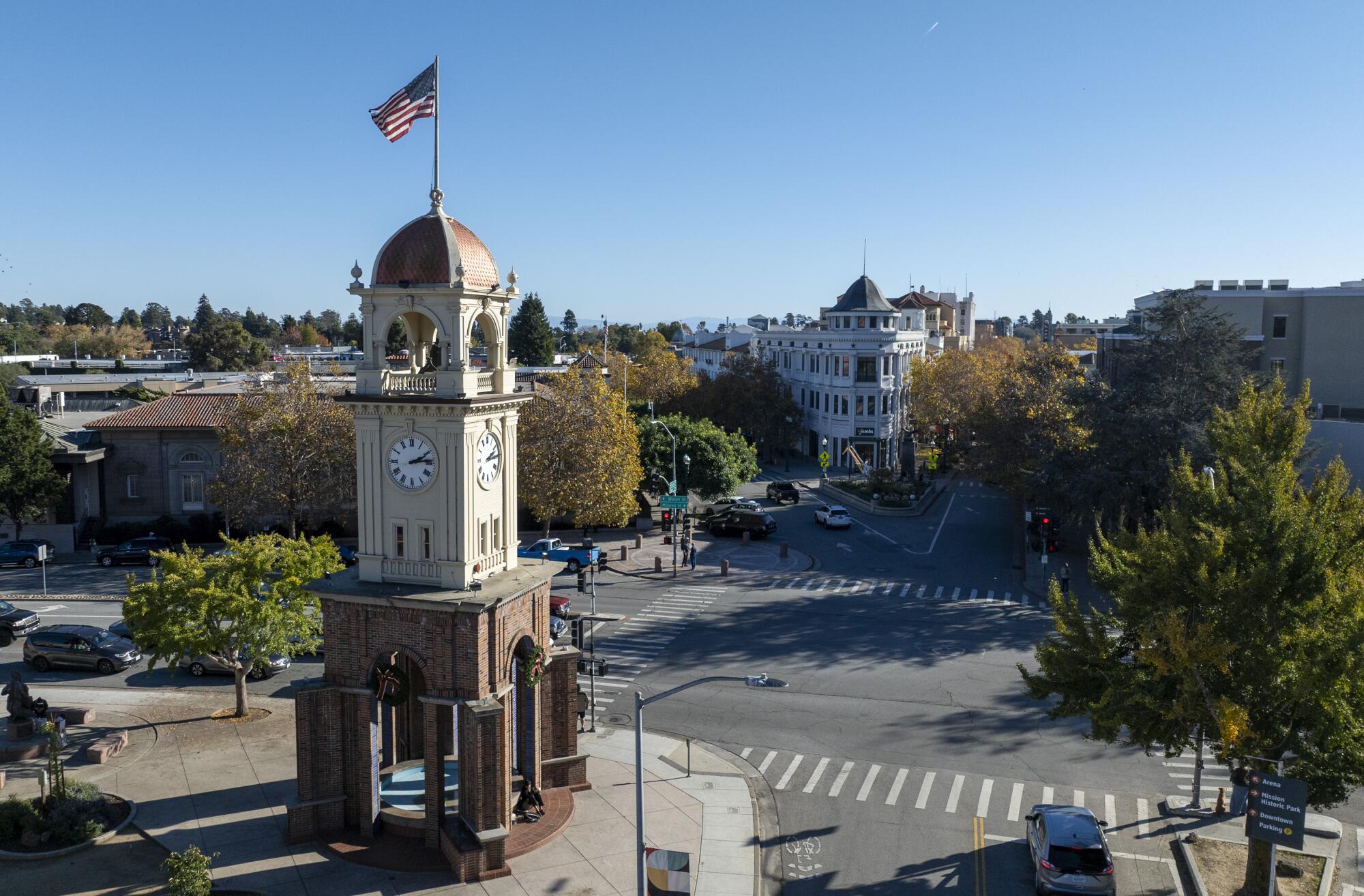
Just days after the anti-high-rise measure qualified for the March ballot, the two sides began bickering over what impact it would have.
Lane, the former mayor, and two affordable housing developers wrote an op-ed for the Lookout Santa Cruz news site that said the ballot measure is crafted so broadly it would apply to all “development projects.” They contend that could trigger the need for citywide votes for projects as modest as raising a fence from 6 feet to 7 feet, adding an ADU to a residential property or building a shelter for the homeless, if the projects exceed current practices in a given neighborhood.
The authors accused ballot measure proponents of faux environmentalism. “If we don’t go up,” they wrote, “we have less housing near jobs — and more people driving longer distances to get to work.”
The ballot measure proponents countered that their critics were misrepresenting facts. They said the measure would not necessitate voter approval for mundane improvements and would come into play in relatively few circumstances, for projects that require amendments to the city’s General Plan.
While not staking out a formal position on the ballot measure, the city’s planning staff has concluded the measure could force citizen votes for relatively modest construction projects.
Northern California was deemed especially unaffordable for renters, with some Southern California counties also topping the list of least affordable places in America.
The two sides also can’t agree on the impact of a second provision of the ballot measure. It would increase from 20% to 25% the percentage of “inclusionary” (below-market-rate) units that developers would have to include in complexes of 30 units or more.
The ballot measure writers say such an increase signals their intent to assure that as much new housing as possible goes to the less affluent. But their opponents say that when cities try to force developers to include too many sub-market apartments, the builders end up walking away.
Santa Cruz’s housing inventory shows that the city has the potential to add as many as 8,364 units in the next eight years, when factoring in proposals such as the downtown high-rises and UC Santa Cruz’s plan to add about 1,200 units of student housing. That’s more than double the number required by the state. But the Department of Housing and Community Development requires this sort of “buffer,” because the reality is that many properties zoned for denser housing won’t get developed during the eight-year cycle.
As with many aspects of the downtown up-zoning, the two sides are at odds over whether incorporating the potential for extra development amounts to judicious planning or developer-friendly overkill.
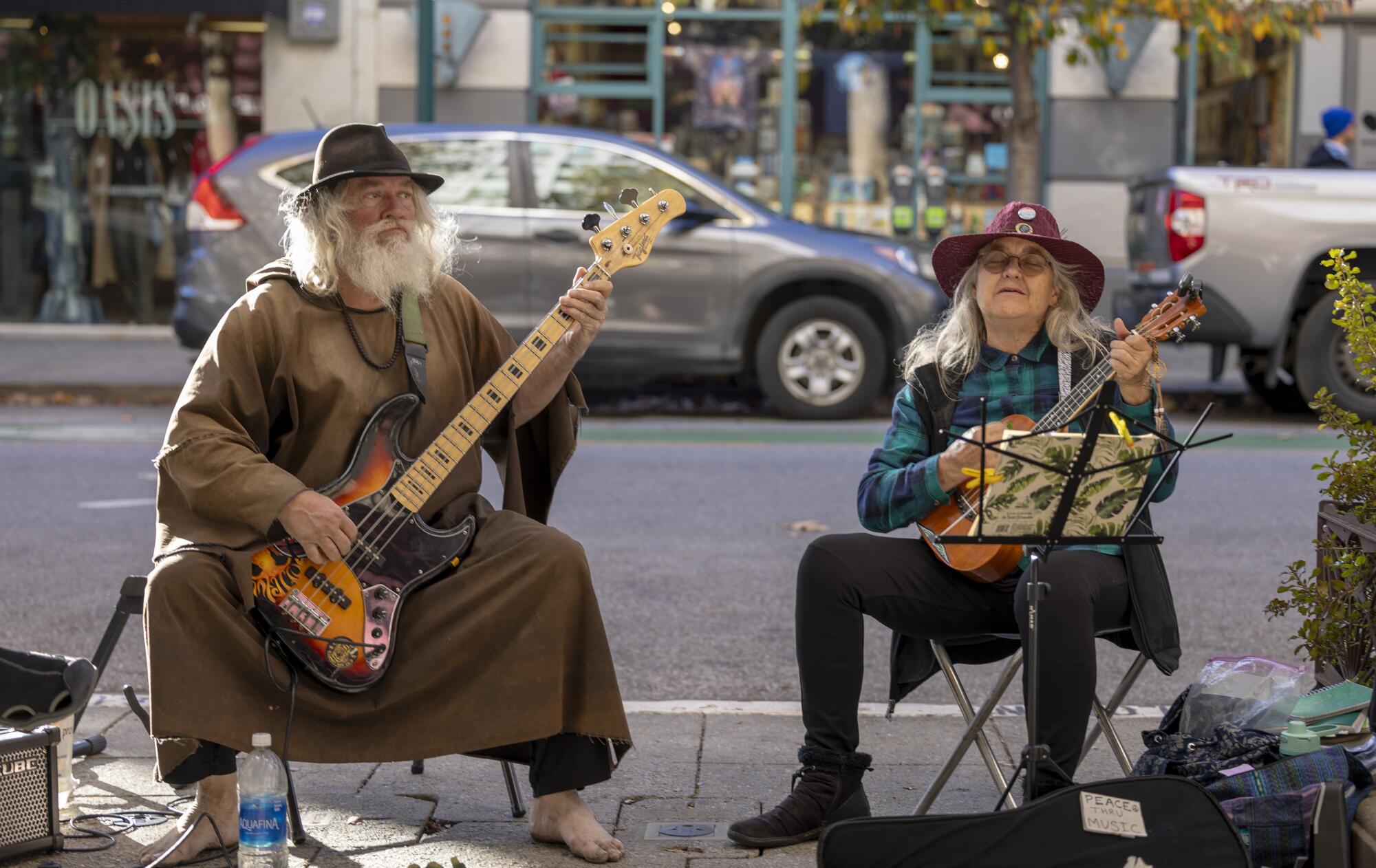
The city’s voters have rejected housing-related measures three times in recent years. In 2018, they decisively turned down a rent control proposal. Last year, they said no to taxing owners who leave homes in the community sitting empty. But they also rejected a measure that would have blocked a plan to relocate the city’s central library while also building 124 below-market-rate apartment units.
The last time locals got this worked up about their downtown may have been at the start of the new millennium, when the City Council considered cracking down on street performers. That prompted the owner of Bookshop Santa Cruz, another local landmark, to print T-shirts and bumper stickers entreating fellow residents to “Keep Santa Cruz Weird.”
Santa Cruzans once again are being asked to consider the look and feel of their downtown and whether its future should be left to the City Council, or voters themselves. The measure provokes myriad questions, including these: Can funky, earnest, compassionate Santa Cruz remain that way, even with high-rise apartments? And, with so little housing for students and working folks, has it already lost its charm?
More to Read
Sign up for Essential California
The most important California stories and recommendations in your inbox every morning.
You may occasionally receive promotional content from the Los Angeles Times.
